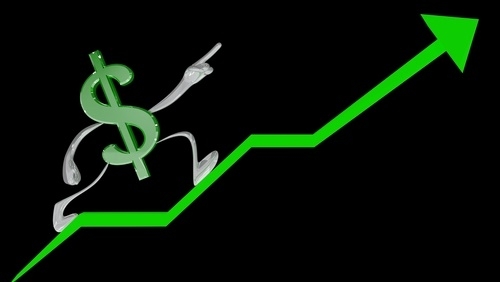
By Roger J Kerr

The Kiwi dollar’s retreat from above the 0.7400 long-term resistance level over the last few weeks has been far form orderly.
Weaker commodity prices and a marginally more dovish RBNZ 10 days ago depreciated the NZD/USD exchange rate to below 0.7200.
However, since that time the direction has been straight back up again. The Kiwi traded to a high of 0.7429 on 16 February, but again encountered selling interest and has again pulled back. The rebound back upwards has been due to a combination of higher soft (dairy) and hard (iron ore) commodity prices and a generally weaker US dollar on global forex markets.
The EUR/USD rate looked like it had reversed from its resistance point of $1.2500 to trade lower to $1.2200. However, renewed concerns over the US economy’s dual deficits has weakened the USD back to $1.2400.
The up, down and up again price pattern in the NZD/USD rate has mirrored the same movements in the EUR/USD rate. Local economic developments have only had a minor impact on the Kiwi’s direction since the start of the year, the most influential being the recovery in whole milk powder prices in the GDT dairy auctions since 1 January from well below US$3,000/MT to US$3,226.
World currency markets are now clearly focusing on long-term economic determinants of the US dollar’s value.
The Trump tax cuts in December have drawn attention to the projected larger internal US government budget deficit. Over history, the USD exchange rate has weakened when their budget deficit has increased, as a lower currency value is required to attract foreign investors in to the US to buy their Treasury bonds that are used to fund the gap between Government income and expenditure.
The problem now is that US treasury bonds are falling in value (yields higher) so nobody is too interested in buying USD’s to buy US bonds. The economic theory goes that the lower corporate tax regime in the US will stimulate economic growth and this in turn lifts tax revenue and reduces the budget deficit. The FX markets are stating that the US economy is already expanding at a decent clip and they do not the additional growth impetus at this time.
The US external trade deficit has not decreased under the Trump administration despite threats of import tariffs and re-negotiating trade agreements to make US manufacturers more competitive against Chinese imports.
The FX markets have also been factoring in well in advance that the European Central Bank will be increasing Euro interest rates sometime within the next two years. Another long-term economic change that is influencing exchange rate movements today.
Looking ahead on future EUR/USD rate movements, there appears to be a greater probability of the financial markets returning to the shorter-term reality of US interest rates now returning a cash yield more than 2.00% above Euro interest rate yields. It has become very expensive indeed for short USD/long Euro speculators to fund their currency positions.
Hedge funds are holding large short-sold USD positions and a failure of the USD to weaken above $1.2500 against the Euro means that they will very soon be forced to unwind and buy the USD back.
The same interest rate differential equation applies to the NZD/USD exchange rate with three-year interest rates in the US at 2.50% now well above NZ three-year rates of 2.17%.
Whilst interest rate differentials have lost their power as drivers of exchange rate direction over recent years, it remains a massive change in market conditions when NZ interest rate yields offer a disincentive to invest in the NZ dollar.
The only attraction the Kiwi dollar currently offers foreign investors and speculators is our high export commodity prices (forestry, meat, horticulture and dairy). High commodity prices force end-manufacturers who use the commodities to seek substitution inputs. Therefore, it seems unlikely that our export commodity prices can move substantially higher from their current high base.
The combination of low relative interest rates and high relative commodity prices does not make the Kiwi dollar an attractive bet for the speculators at this time. There is no great upside.
At 0.9330, the NZD/AUD cross-rate is very much at the top of its trading range. The NZ economy is no longer out-performing the Australian economy with business/consumer confidence now higher in Australia after the change of government here.
The speculative players in the NZD/AUD cross-rate were aggressive buyers of the Kiwi dollar when the cross-rate dipped to 0.9030 just three weeks ago. They will be equally aggressive sellers of the Kiwi against the Aussie dollar at rates above 0.9300 as they unwind positions.
Daily exchange rates
Select chart tabs
Roger J Kerr contracts to PwC in the treasury advisory area. He specialises in fixed interest securities and is a commentator on economics and markets. More commentary and useful information on fixed interest investing can be found at rogeradvice.com




We welcome your comments below. If you are not already registered, please register to comment.
Remember we welcome robust, respectful and insightful debate. We don't welcome abusive or defamatory comments and will de-register those repeatedly making such comments. Our current comment policy is here.